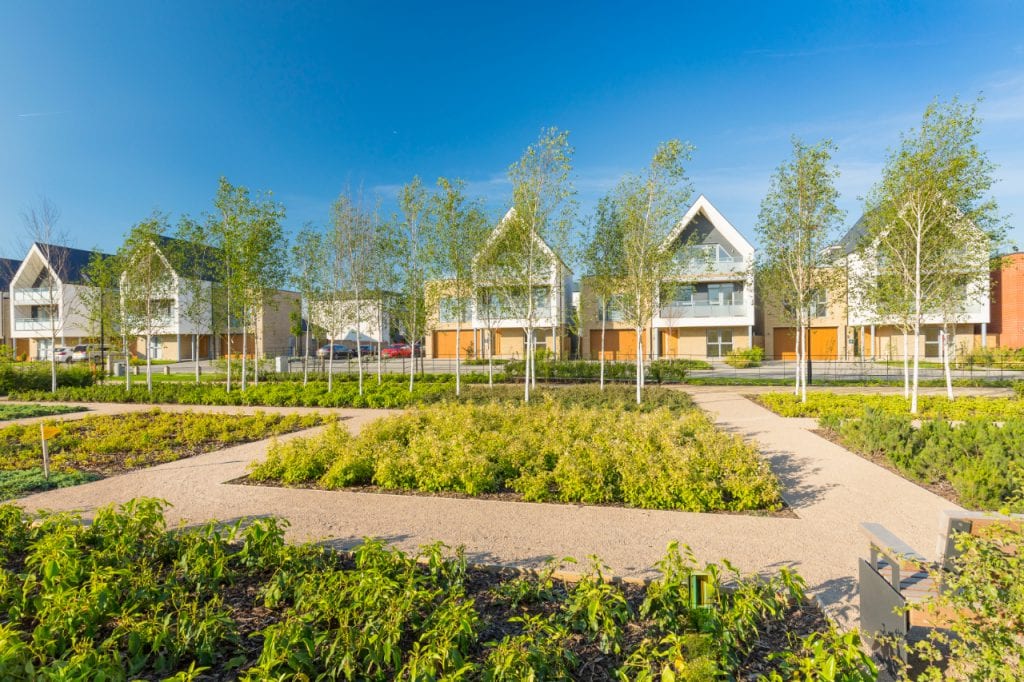Principle 9: Stewardship and Maintenance
Standard
Why does it matter?
The stewardship and maintenance of an asset simply means to ensure that it is properly looked after in perpetuity. Stewardship for the management and maintenance of GI is vital to ensure the functions and benefits of individual GI features are delivered and sustained for the long term. This includes sustaining their funding, monitoring and evaluation.
People are more likely to use green spaces if they are well maintained. If sites are easier to access, more visible and better used, they will contribute to local people’s sense of civic pride, encourage ongoing involvement (i.e., volunteering and formation of ‘Friends Of’ groups).
In line with Principle 4: Early Engagement, it is important that management and maintenance provisions for development proposals are considered during the early engagement with stakeholders. This could create opportunities for community participation and volunteering regarding GI management and maintenance, creating a sense of ownership ensuring that GI is looked after in the long term. It needs both early engagement and collaboration liaising with the Country Parks teams, Outdoor Pursuits Centres, landowners, Parishes, the community, and Wildlife Trusts. Long-term management and maintenance often take a community effort.
Future GI investment decisions should be built on the value that GI creates, as part of place making and not just on how much GI assets cost to maintain. Every £1 spent on parks in England generates an estimated £7 in additional value for health and wellbeing and the environment (The Parks Alliance, 2020).

Meeting the principle
GI must be designed to be appropriate to the local character and needs of the community and a wide range of users. It should be accessible to all and usable all year round. Stewardship/governance bodies should ensure relevant stakeholders, representatives of local communities, users and other beneficiaries are able to get involved in the management of their GI and green spaces. As the end-users are tremendously important and should be engaged and represented not only in the planning for GI, but its stewardship, so their needs are integrated, and this creates a sense of ownership. This will ensure that the GI caters to local needs and is looked after in the long-term.
Long-term management and maintenance of GI need to be considered at an early stage in planning for developments to ensure it is considered in the viability assessment of the site. This includes consideration by the Local Planning Authority and the developers during the planning process on how the GI will be funded, managed and maintained in perpetuity. It is important through masterplanning that the design for specific spaces within a site incorporates multifunctional GI and the likely management and maintenance costs to be identified at the outset. This will potentially provide an opportunity to identify designing solutions to suit the budget early on. This will include ensuring landscapes, planting and species are selected as part of the GI design to allow for effective long-term low-cost management and maintenance. As well as delivering other GI multiple functions and benefits. For example:
- In public green spaces use low growing grasses, wildflower strips/meadows which can support biodiversity.
- Street trees are of a suitable species and specification. Enough space to grow or planted in tree pits to avoid future conflicts with services and hard surfaces in the long-term.
It is important to identify the long-term management and maintenance within planning policy. Different ways of using revenue funding to secure long-term maintenance need to be considered to diversify income streams and maximise resilience.
Ensure sound legal and financial arrangements are in place. This will enable collaboration with communities, landowners, land managers, trusts, foundations, and others in local governance. This will secure the long-term management and maintenance of GI. It will also future proof for changes, such as to land ownership.
Explore opportunities for income generation through innovative approaches. These include crowd funding, contactless donation technology, energy generation (e.g., biomass or other renewables), habitat and carbon banking, prescribed health activities.
It is important to make GI essential infrastructure within strategic policy. GI Plans include funding, governance, ongoing management, monitoring and action plan. It is important to gather local and national evidence on the benefits and economic returns of investing in GI to make a business case for investing in GI across a broad range of sectors.
Development proposals are expected to outline how retained GI, such as existing trees, hedges and vegetation will be protected during construction via documentation such as a Construction Environmental Management Plan (CEMP).
Page updated: 4/04/2023
